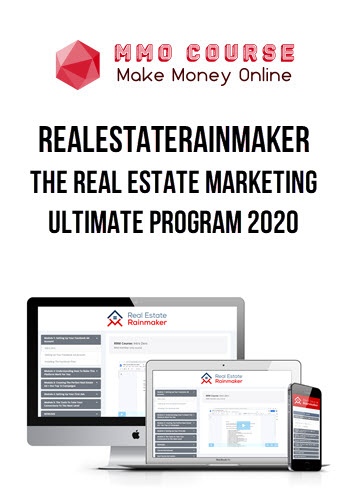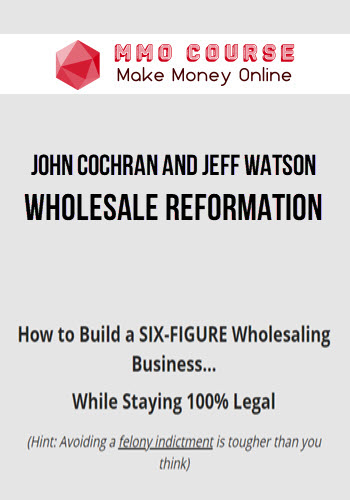Wall Street Prep – Real Estate Financial Modeling
$499.00 $150.00
Total Sold: 1
»Instant Delivery
Description
Wall Street Prep – Real Estate Financial Modeling
Description of Real Estate Financial Modeling
This real estate financial modeling course is delivered at the world’s leading real estate private equity firms and academic institutions.
Get 20+ Hours of Video Content + Reusable Real Estate Excel Model Templates
- Get lifetime access to step by step online video training as well as industry-grade reusable real estate excel templates for modeling acquisitions and developments for multifamily, office, retail, industrial properties, including JV & Waterfall Modeling.
Learn from Real Estate practitioners
- Led by real estate private equity expert Aaron Hancock, you’ll not only learn modeling best practices across the different real estate property types, you’ll learn how real estate investors actually evaluate opportunities.
Enhance your Real Estate credentials
- Designed for professionals and students pursuing careers in real estate private equity as well as operators, developers, lenders, individual investors. Enrollment includes the option of sitting for the Real Estate Financial Modeling Certification. Those who successfully pass the exam can present their achievement on their resumes and LinkedIn (see below).
A Comprehensive Real Estate Financial Modeling Program
This course begins with the foundations of real estate finance and excel best practices, adding complexity piece by piece. By the end of the program, learners will build complete, industrial grade multifamily, office, retail and industrial models, including in depth treatment of the modeling of revenues, operating expenses, capital improvements, debt, and joint venture waterfalls
- Real estate financial modeling best practices
- Real estate investment and development theory
- How to utilize historical financials to build a multifamily acquisition model
- How to utilize Argus outputs to build a commercial acquisition model
- How to build a real estate development model
- How to model a debt schedule
- How to model a joint venture waterfall
What will you learn in Real Estate Financial Modeling?
Introduction to Real Estate Modeling
- Section 1 of our Real Estate Financial Modeling Program. This course provides an introduction to the function of real estate financial models, the challenges presented by bespoke approaches, and Wall Street Prep’s approach to teaching Real Estate Financial Modeling. We will begin with a review of efficiency and formatting fundamentals that will be employed throughout the course. From there, we’ll begin to develop an understanding of the different types of real estate models.
Operating Cash Flow
-
Section 2 of our Real Estate Financial Modeling Program. Real estate is all about cash flow. This module will cover cash flow builds for multifamily and commercial property types. We will build the foundations of revenues and expenses and finish with a discussion on the importance of net operating income. Each section will begin with the characteristics underpinning the cash flow for the property type at hand. After detailed discussions of various revenue and expense methodologies, concepts will be crystalized with step-by-step modeling walkthroughs in Excel.
Non-Operating Cash Flow
- Section 3 of our Real Estate Financial Modeling Program. Although real estate is valued based on operating cash flow, non-operating cash flows are integral to business plans. This module will cover leasing costs for commercial properties, capital improvements and costs associated with buying and selling a property. After detailed discussions of the various cost items within non-operating cash flow, the concepts will be reinforced with step-by-step modeling walkthroughs in Excel.
-
Section 4 of our Real Estate Financial Modeling Program. Real estate is a highly levered asset class and an understanding of leverage is critical for any real estate investor. This module will serve as a primer on real estate debt, covering everything from different ways to finance an acquisition, to key terms in loan documents and how to model an amortization schedule. A significant portion of this module is dedicated to understanding the applications of leverage, reviewing key terminology and introducing debt-specific calculations. The module concludes with a step-by-step modeling walkthrough in Excel.
Joint Ventures & Waterfalls
- Section 5 of our Real Estate Financial Modeling Program. The waterfall is infamously part of most real estate interview modeling tests. This module introduces joint ventures and the theory behind waterfalls. After introducing key terminology and reinforcing the underlying theory, considerable time will be spent on a step-by-step walkthrough of how to model a waterfall.
-
Section 6 of our Real Estate Financial Modeling Program. Real estate financial models are tools for projecting the cash flows of a potential investment. The cash flow projections alone are not enough to analyze a potential investment. This module will cover how to summarize the outputs of a model to form the basis of an analysis by discussing key metrics and how to put these metrics into perspective.
Development Modeling
- Section 7 of our Real Estate Financial Modeling Program. Real estate can be bought or built. Up to this point, the course has been focused on buying property. This module will unpack the differences and similarities in modeling a development and an acquisition. Development specific topics such as construction budgets and lease-up will be covered as well as the nuances of development financing. Armed with the real estate financial modeling fundamentals previously discussed, this module will also go into detail on how to model a development step-by-step.
- Section 8 of our Real Estate Financial Modeling Program. Building well-formatted and extensive models is the name of the game for those working for institutional firms or preparing materials for a potential investor. But, many situations – whether a modeling test or first pass at a potential personal investment – necessitate building a model quickly from a blank Excel sheet. This acquisition case study is an opportunity to test everything you’ve learned utilizing the key pieces of information you would have in the real world. After attempting the case study independently, follow along to see how best to stay organized and which “corners to cut” when under time constraints.
- Section 9 of our Real Estate Financial Modeling Program. Building well-formatted and extensive models is the name of the game for those working for institutional firms or preparing materials for a potential investor. But, many situations – whether a modeling test or first pass at a potential personal investment – necessitate building a model quickly from a blank Excel sheet. This development case study is an opportunity to test everything you’ve learned utilizing the key pieces of information as you would in the real world. After attempting the case study independently, follow along to see how best to stay organized and which “corners to cut” when under time constraints.
Sale Page: Ben Adkins – Thousand Dollar Days
Delivery Policy
When will I receive my course?
You will receive a link to download your course immediately or within 1 to 21 days. It depends on the product you buy, so please read the short description of the product carefully before making a purchase.
How is my course delivered?
We share courses through Google Drive, so once your order is complete, you'll receive an invitation to view the course in your email.
To avoid any delay in delivery, please provide a Google mail and enter your email address correctly in the Checkout Page.
In case you submit a wrong email address, please contact us to resend the course to the correct email.
How do I check status of my order?
Please log in to MMOCourse account then go to Order Page. You will find all your orders includes number, date, status and total price.
If the status is Processing: Your course is being uploaded. Please be patient and wait for us to complete your order. If your order has multiple courses and one of them has not been updated with the download link, the status of the order is also Processing.
If the status is Completed: Your course is ready for immediate download. Click "VIEW" to view details and download the course.
Where can I find my course?
Once your order is complete, a link to download the course will automatically be sent to your email.
You can also get the download link by logging into your mmocourse.hk account then going to Downloads Page.
Related products
Total sold: 2










